
How to Use Google Trends for Ecommerce: Mastering Google Trends in 2023
In the ever-changing landscape of the digital world, staying ahead of trends is not just an advantage; it’s a necessity.
Whether you’re a seasoned marketer, an aspiring entrepreneur, or someone dabbling in the vast universe of ecommerce, understanding what people are searching for can be a game-changer.
That’s where Google Trends comes into play.
Google Trends is a free search feature provided by the tech giant Google.
It’s like having a crystal ball that allows you to peek into the collective mind of internet users.
Want to know what’s hot and what’s not? Google Trends has the answers.
But what exactly is Google Trends, and how can it be a powerful tool for your ecommerce business?
Let’s dive into the world of trend analysis and explore how you can access and utilize this incredible feature.
What is Google Trends?
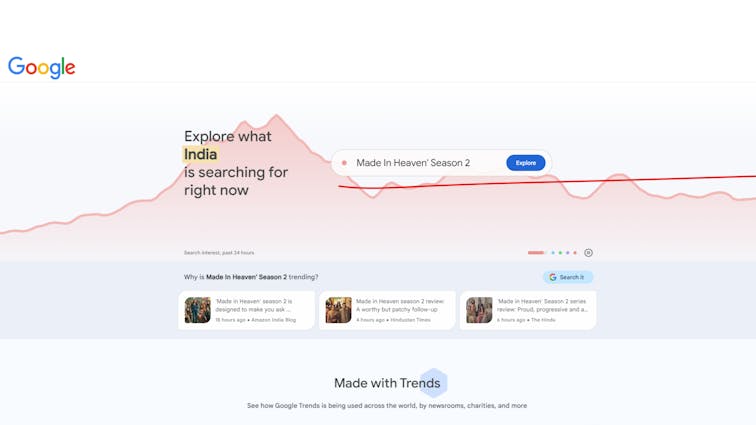
Google Trends is more than just a search tool; it’s a window into the world’s curiosity. By analyzing the popularity of search queries over various time frames, regions, and languages, Google Trends offers invaluable insights into what people are interested in at any given moment.
Imagine being able to predict the next big thing in fashion, technology, or entertainment. With Google Trends, you can do just that. It’s like having a pulse on the global zeitgeist, allowing you to tailor your ecommerce strategies to align with current interests and demands.
Whether you’re looking to launch a new product, optimize your marketing campaigns, or simply understand what makes your target audience tick, Google Trends provides the data-driven insights you need.
How to Access Google Trends
Accessing Google Trends is as simple as pie, yet as powerful as a supercomputer. Here’s how you can get started:
- Open Your Browser: Any modern web browser will do.
- Navigate to the Google Trends Website: Simply type “Google Trends” into your search bar or visit trends.google.com.
- Explore: You don’t even need a Google account to start exploring. Just type in a keyword, and you’re off to the races.
From comparing different search terms to analyzing trends in specific regions, the possibilities are endless. You can even download the data for more in-depth analysis.
Overview of Google Trends Features
Google Trends is more than just a search bar. It’s a multifaceted tool with features that allow users to:
- Explore Topics: Discover what’s trending globally or in specific regions.
- Compare Keywords: Analyze up to five keywords or topics simultaneously.
- View Related Queries: See what other related terms people are searching for.
- Analyze Interest Over Time: Track how interest in a topic has changed over weeks, months, or even years.
- Identify Seasonal Trends: Understand when certain products or topics peak in popularity.
In essence, Google Trends is a treasure trove of insights, a tool that empowers businesses to make data-driven decisions.
Whether you’re an eCommerce giant or a small local store, understanding how to use Google Trends can be a game-changer.
Google Trends Tricks for Businesses and Entrepreneurs

A. Finding Niches and Keywords
1. Discovering New Niches
Every day, new interests and hobbies emerge, creating fresh opportunities for eCommerce entrepreneurs.
Google Trends can help you spot these emerging niches before they become mainstream. By monitoring the “Trending Searches” and “Recently Trending” sections, you can identify topics that are gaining traction.
Maybe it’s a new type of sustainable fabric, a novel fitness regimen, or a unique kitchen gadget. By jumping on these trends early, you can position your store as a pioneer in the niche.
2. Identifying Trending and Evergreen Niches
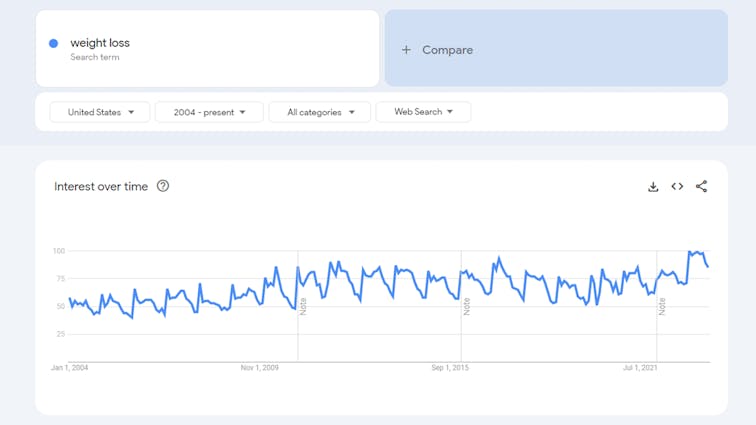
Not all trends are fleeting. Some niches, while experiencing a surge in popularity, have the potential to remain relevant for years.
Google Trends allows you to differentiate between a passing fad and an evergreen niche. By analyzing the “Interest Over Time” graph, you can see if a topic has consistent interest or if it’s just a temporary spike.
For instance, while fidget spinners had a meteoric rise and fall, eco-friendly products have shown a steady increase in interest over the years, indicating their evergreen nature.
3. Keyword Trend Research and Analysis
Keywords are the backbone of SEO. With Google Trends, you can ensure that the keywords you target are not only relevant but also in demand.
Enter a keyword into the search bar and observe its popularity trajectory. Is it on the rise? Declining? Seasonal? This data can inform your content strategy, helping you focus on keywords that will drive traffic to your site.
4. Related Queries and “Breakout” Keywords
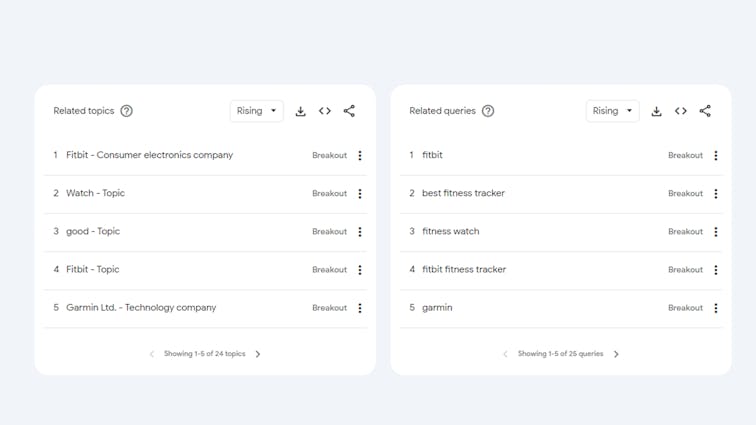
One of the most powerful features of Google Trends is the “Related Queries” section.
Here, you can discover terms that people are searching for in relation to your primary keyword. Even more intriguing are the “Breakout” keywords. These are terms that have seen a significant surge in search volume in a short period.
They can be indicative of a new trend or a shift in public interest. By targeting these breakout keywords, you can position your content at the forefront of emerging trends.
B. Product and Content Research
In the bustling marketplace of eCommerce, staying relevant and innovative is key. Google Trends is not just a tool for keyword discovery; it’s a versatile instrument that can guide your product and content strategy.
Let’s explore how you can leverage Google Trends for product and content research.
1. Discovering Relevant Product Categories
Are you looking to expand your product line but unsure where to start? Google Trends can help you identify product categories that resonate with your target audience.
By exploring related topics and queries, you can uncover categories that align with your existing offerings.
For example, if you sell organic skincare products, Google Trends might reveal a growing interest in natural hair care or eco-friendly packaging.
These insights can guide your product development, ensuring that you stay in tune with consumer demands.
2. Expanding Product Offerings
Google Trends isn’t just about discovering new categories; it’s about optimizing your existing product line.
By analyzing trends within your niche, you can identify opportunities to enhance or diversify your offerings. Maybe it’s adding a new flavor to a popular snack, introducing a limited edition of a best-selling item, or creating bundles that cater to seasonal demands.
Google Trends provides the data to make informed decisions, helping you keep your product line fresh and appealing.
3. Writing Content About Current Global and Local Trends
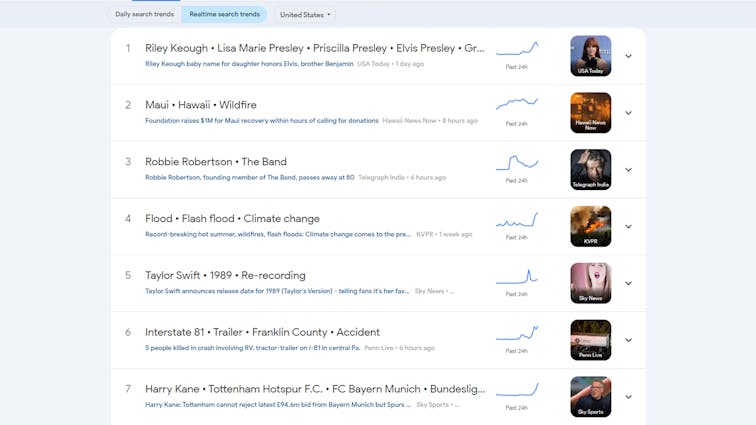
Content is king, but relevance is queen. Writing about current global and local trends can make your content more engaging and relatable.
Google Trends allows you to tap into the zeitgeist, understanding what’s on people’s minds both globally and in specific regions.
Whether it’s a global phenomenon like the rise of remote work or a local trend like a food festival in your city, crafting content around these themes can make your blog or social media posts more compelling.
4. Seasonal Content Planning
Seasonality plays a crucial role in eCommerce. From holiday sales to seasonal fashion, understanding the rhythm of the market can give you a competitive edge.
Google Trends offers a feature to analyze interest over time, allowing you to identify when certain products or topics peak in popularity. Planning your content around these seasonal trends ensures that you’re reaching your audience when they’re most interested.
Whether it’s a summer guide to outdoor furniture or a winter skincare routine, aligning your content with the seasons can boost engagement and sales.
C. Seasonal and Regional Analysis
In the world of eCommerce, timing and location are everything. Understanding seasonal patterns and regional preferences can make the difference between a thriving business and a stagnant one.
Google Trends offers powerful insights into both these aspects. Let’s explore how you can leverage Google Trends for seasonal and regional analysis.
1. Promoting Business During Seasonal Trends
Seasonal trends are like waves in the ocean of commerce. Catch them at the right time, and you can ride them to success.
Google Trends helps you identify these waves, showing when interest in specific products or topics peaks. Whether it’s the holiday shopping frenzy, back-to-school sales, or summer vacation planning, you can tailor your promotions to align with these seasonal trends.
By offering timely discounts, special editions, or themed content, you can attract more customers and boost sales during these peak periods.
2. Finding Niche Specific to a Location
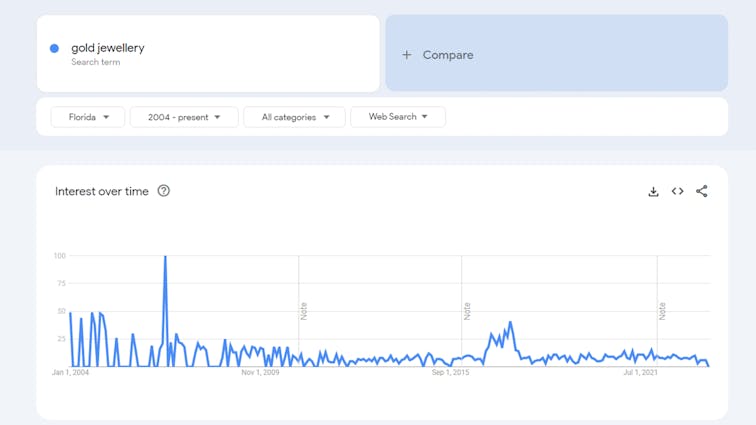
Not all trends are global. Sometimes, a niche or product might be trending in a specific region or city.
Google Trends allows you to filter results by location, helping you uncover opportunities that might be overlooked on a broader scale.
Perhaps a particular style of clothing is popular in a certain city, or a local festival is driving interest in specific products.
By targeting these regional trends, you can create more personalized offerings that resonate with local audiences.
3. Monitoring Seasonal Topics
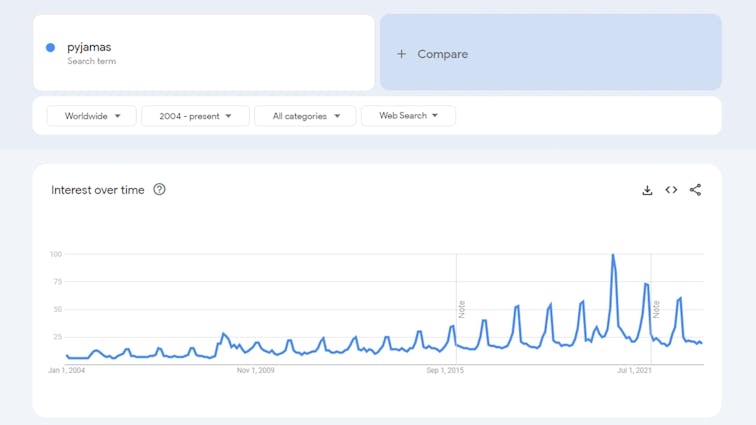
Seasons shape our lives and our shopping habits. From winter coats to summer beachwear, seasonal topics influence consumer behavior.
Google Trends enables you to monitor these seasonal shifts, providing insights into what people are searching for as the seasons change.
This information can guide your product inventory, content calendar, and marketing campaigns, ensuring that you’re always in sync with the seasonal rhythm of your audience.
4. Targeting Local Audiences
Local targeting is about more than just geography; it’s about understanding the unique interests and needs of a community.
Google Trends offers insights into what’s trending in specific regions, cities, or even neighborhoods. By analyzing these local trends, you can create targeted advertising, localized content, and special offers that speak directly to the community you’re serving.
It’s not just about selling products; it’s about building relationships and becoming a part of the local fabric.
D. Competitor Analysis
In the competitive landscape of eCommerce, understanding your rivals is as crucial as knowing your customers.
Google Trends offers unique insights into competitor analysis, allowing you to gauge your position in the market and make informed strategic decisions. Here’s how:
1. Analyzing Competitors with Google Trends
Google Trends isn’t just about tracking what’s hot; it’s also a tool for understanding who’s hot.
By entering your competitors’ brand names or key products, you can see how they’re performing in terms of search interest. Are they on the rise? Declining? What regions are they popular in?
These insights can help you identify opportunities and threats, guiding your marketing and product strategies.
2. Comparing Brand Performance
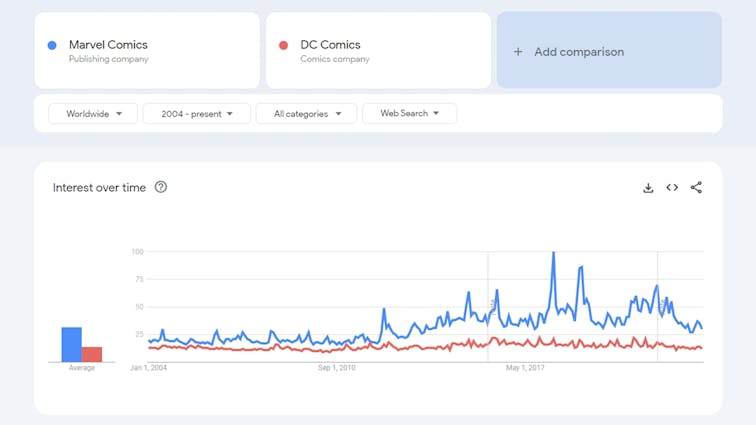
One of the standout features of Google Trends is the ability to compare multiple terms. This means you can pit your brand against your competitors, seeing how you stack up in terms of search popularity.
This side-by-side comparison can reveal strengths and weaknesses, helping you understand where you need to focus your efforts to gain a competitive edge.
3. Identifying Competition Through Related Queries
Sometimes, competition comes from unexpected quarters. Google Trends’ “Related Queries” section can help you uncover competitors you might not be aware of.
By analyzing the terms related to your products or brand, you might discover new players in the field or alternative products that are gaining traction. Staying aware of these emerging competitors ensures that you’re never caught off guard.
E. Content Optimization and Update
Content is a living entity; it needs to grow and evolve to stay relevant. Google Trends is a valuable ally in this process, helping you keep your content fresh, engaging, and aligned with current interests. Here’s how:
1. Using Google Trends to Update Content
Trends change, and so should your content. Google Trends allows you to monitor shifts in interest, helping you identify when it’s time to update your content.
Whether it’s a blog post, product description, or landing page, aligning your content with current trends ensures that it continues to resonate with your audience.
2. Content Freshness Coordination
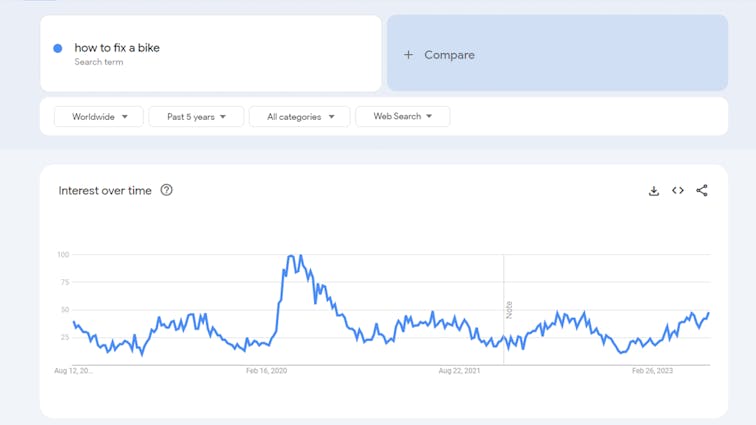
Freshness isn’t just about what’s new; it’s about what’s relevant. Google Trends helps you coordinate your content freshness with market demands.
By analyzing seasonal patterns, breakout keywords, and emerging topics, you can keep your content calendar vibrant and responsive, ensuring that you’re always offering something fresh and exciting to your readers.
3. Updating Old Content with High-Interest Queries
Old content doesn’t have to be stale content. Google Trends can breathe new life into your existing content by identifying high-interest queries related to your topics.
By incorporating these trending terms into your old posts or pages, you can rejuvenate them, making them more appealing to both readers and search engines.
F. Video and eCommerce Optimization
In the age of multimedia, video content and eCommerce optimization are vital for success. Google Trends extends its utility into these domains, offering insights that can enhance your video marketing and online shopping strategies. Here’s how:
1. YouTube Video Marketing
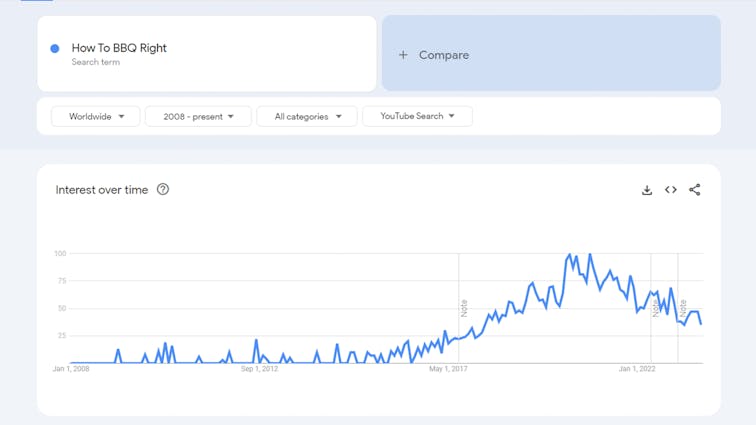
YouTube is a behemoth in the world of video content, and Google Trends offers a specific section for YouTube search trends.
By analyzing what’s trending on YouTube, you can craft video content that aligns with current interests.
Whether it’s creating tutorials, reviews, or entertaining content, understanding YouTube trends ensures that your videos resonate with viewers, driving engagement and conversions.
2. Google Shopping Trends
Google Shopping is a key player in the eCommerce arena, and Google Trends offers insights into shopping-specific searches.
By monitoring these trends, you can identify hot products, seasonal shopping patterns, and emerging consumer preferences.
This data can guide your product selection, pricing strategy, and promotional efforts, ensuring that your online store stays in tune with shopping trends.
3. SEO for Video and eCommerce
SEO isn’t just for written content; it’s vital for video and eCommerce as well. Google Trends helps you identify keywords and topics that are relevant to both video content and online shopping.
By optimizing your video descriptions, product pages, and metadata with these trending terms, you can enhance your visibility on search engines, attracting more viewers and shoppers.
G. Comparative Analysis
Comparative analysis is the art of understanding differences and similarities, and Google Trends is a master artist in this field. Whether it’s comparing keywords or analyzing long-term relevance, here’s how you can leverage Google Trends:
1. Comparing Keywords

Comparing keywords is more than just a numbers game; it’s about understanding context and relevance.
Google Trends allows you to compare up to five keywords or phrases, providing insights into their relative popularity, regional interest, and seasonal patterns.
This comparison can guide your content strategy, helping you choose the most impactful keywords for your business.
2. Understanding Long-Term Relevance
Not all trends are fleeting. Some have long-term relevance, and understanding these enduring trends is crucial for sustainable success.
Google Trends offers a historical view, allowing you to observe how interest in specific topics has evolved over time.
This long-term perspective can inform your product development, content planning, and overall business strategy, ensuring that you focus on areas with lasting appeal.
3. Observing Differences and Effectiveness
Google Trends isn’t just about what’s popular; it’s about why it’s popular. By observing differences in regional, seasonal, and demographic interest, you can understand the underlying factors that drive trends.
This understanding can guide your marketing efforts, helping you tailor your approach to different segments of your audience, enhancing effectiveness.
H. Yearly Planning and Strategy
Planning is the bridge between goals and achievements, and Google Trends can be the architect of that bridge. Here’s how you can leverage it for yearly planning and strategy:
1. Planning Yearly Calendar
A yearly calendar isn’t just a schedule; it’s a strategic roadmap. Google Trends helps you plan this roadmap by providing insights into seasonal patterns, historical trends, and emerging opportunities.
Whether it’s scheduling product launches, content releases, or sales campaigns, Google Trends ensures that your yearly calendar aligns with market dynamics.
2. Timing Content and Sales with Peak Trends
Timing is everything, and Google Trends helps you get it right. By analyzing peak trends, you can time your content and sales to coincide with maximum interest.
Whether it’s a summer sale, a winter holiday guide, or a back-to-school campaign, aligning your timing with peak trends ensures that you reach your audience when they’re most engaged.
3. Scheduling Content Based on Historical Patterns
History often repeats itself, and Google Trends helps you capitalize on this repetition. By analyzing historical patterns, you can schedule your content to align with recurring trends.
Whether it’s an annual festival, a seasonal product, or a monthly theme, understanding historical patterns ensures that your content calendar stays relevant and resonant year after year.
In conclusion, Google Trends is more than a tool; it’s a strategic ally. From video marketing to yearly planning, it offers insights and opportunities that can transform your eCommerce business. By understanding how to use Google Trends, you can create a more dynamic, responsive, and successful online store.
Ready to revolutionize your eCommerce venture with the insights of Google Trends? Book a consultation to create your online store and let’s turn trends into triumphs!








